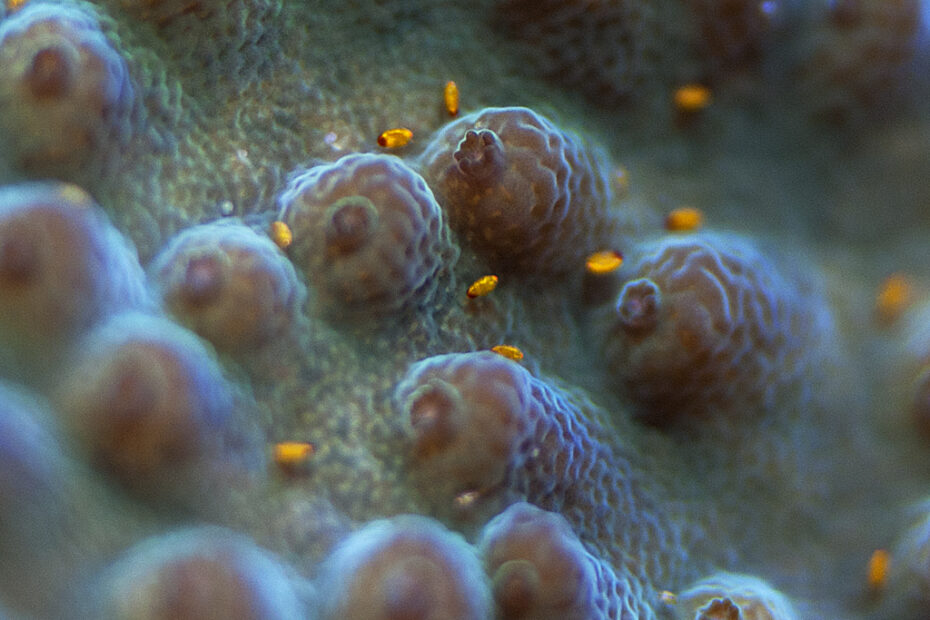Red bugs (Tegastes acroporanus) are tiny crustaceans that parasitize Acropora corals, especially smooth-skinned varieties. Though not as immediately destructive as flatworms or nudibranchs, they cause chronic stress and can severely impact coral health and growth over time. They’re easy to miss, easy to spread, and a pain to eliminate.
What Are Red Bugs?
Red bugs are copepods—small arthropods that live on Acropora tissue, feeding on coral mucus and irritating the coral polyps. They appear as tiny red or yellow specks (less than 1 mm) and often concentrate around the base of branches or between polyps.
While a few red bugs may go unnoticed, an established infestation leads to:
- Poor polyp extension
- Faded coloration
- Slowed growth
- Increased vulnerability to other stressors
They don’t consume tissue directly like AEFWs but are parasitic, and their constant presence weakens the coral over time.
How to Identify Them:
- Inspect Acropora polyps under white light and magnification (3–10x is ideal)
- Look for small red/yellow moving dots near the base or on the surface
- Polyp extension is often poor even when water parameters are good
Red bugs don’t typically infest other coral genera, so the issue is limited to Acropora.
How They Spread:
Red bugs spread via infected frags or colonies. They can survive short periods in water, and they hitchhike easily on coral skeletons or plugs.
Treatment Options:
1. Interceptor (Rx Only)
The most effective treatment is Interceptor (milbemycin oxime), a prescription dog dewormer. It kills red bugs by targeting their nervous system.
- Dose in a separate tank (or entire system if needed)
- Remove inverts like shrimp, crabs, and pods—Interceptor is toxic to them
- Treat at 0.025–0.05 mg/L for 6–8 hours
- Perform a 25% water change and run activated carbon after treatment
- Repeat weekly for 2–3 rounds to ensure full elimination
Note: This treatment should not be done casually. Always research current dosing protocols and monitor closely.
2. Dipping (Limited Success)
Coral dips like Bayer or Revive may knock off some red bugs but typically won’t eliminate the infestation. Dips are helpful for reducing numbers or confirming presence but not reliable for eradication.
3. Quarantine and Observation
Quarantining new Acropora for at least 2 weeks helps catch red bug infestations early. During this time, observe for poor polyp extension or visible bugs under magnification.
Prevention:
- Always dip and inspect Acropora frags
- Quarantine all new SPS additions
- Avoid frag swaps from unknown systems
- Use dedicated tools for QT vs. display
Final Thoughts:
Red bugs won’t melt your corals overnight, but they are an insidious stressor that reduces vitality and long-term health. The key to beating them is early identification and decisive treatment—ideally in quarantine, before they ever reach your display. Keep your Acros happy by keeping them red bug-free.
